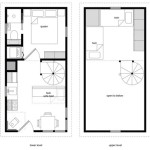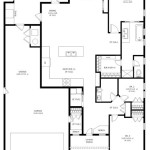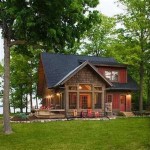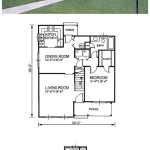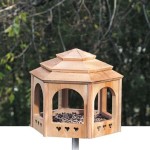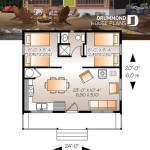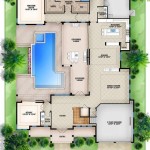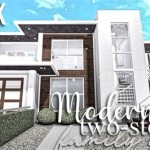Drawing a 2-Bedroom Flat Plan on a Half Plot: Key Considerations
Developing a functional and aesthetically pleasing 2-bedroom flat plan on a half plot of land requires careful planning and consideration of several key factors. This undertaking demands a thorough understanding of space optimization, building regulations, and client preferences. A half plot, typically measuring around 50ft x 50ft (2500 sq ft) or variants depending on local standards, presents unique challenges in maximizing livable area while adhering to stipulated building codes.
The initial phase involves a precise survey of the land, identifying its dimensions, orientation, and any existing utilities or easements. This information is crucial for determining the buildable area and positioning the flat to optimize natural light and ventilation. Consideration must be given to local setback requirements, which dictate the minimum distance a building must be from property lines. Ignoring these regulations can result in costly delays and legal complications during the construction process.
Effective communication with the client is paramount throughout the design process. Understanding their lifestyle, priorities, and budget will guide decisions regarding the layout, features, and finishes of the flat. This collaborative approach ensures the final design aligns with the client's needs and expectations.
Key Point 1: Maximizing Space Efficiency
Space efficiency is paramount when designing a 2-bedroom flat on a half plot. This involves strategically planning the layout to minimize wasted space and maximize the functionality of each room. Open-plan living areas, combining the living room, dining area, and kitchen, are a common strategy for creating a sense of spaciousness. These areas can be visually divided using furniture placement, changes in flooring, or subtle variations in ceiling height.
In designing the bedrooms, consider the placement of windows and doors to allow for optimal furniture arrangement. Built-in wardrobes and storage solutions can further enhance space efficiency by eliminating the need for bulky freestanding furniture. Furthermore, using wall mounted units for entertainment and storage can keep the floor clear and the space feeling bigger.
The bathroom design should prioritize functionality and space-saving fixtures. A compact toilet, a wall-mounted sink, and a shower stall instead of a bathtub can significantly reduce the bathroom's footprint. Utilizing vertical storage solutions, such as shelving units above the toilet, can maximize storage space without sacrificing floor area. Furthermore, a well-placed mirror can create the illusion of a larger space.
The kitchen design requires a focus on efficient workflow and storage. Consider a galley kitchen or an L-shaped kitchen layout to optimize space utilization. Incorporating pull-out shelves and drawers in the cabinetry can provide easy access to stored items and maximize storage capacity. Opting for smaller, energy-efficient appliances can also contribute to space savings.
Circulation space, such as hallways, should be minimized to maximize livable area. Instead of long, dedicated hallways, consider incorporating circulation paths into the open-plan living area or using shorter, wider hallways that serve multiple functions, such as a gallery wall or a small reading nook.
Multifunctional furniture can also contribute to space efficiency. A sofa bed in the living room can provide extra sleeping space for guests, while a coffee table with storage can provide a place to store books and magazines.
Key Point 2: Adhering to Building Regulations and Accessibility
Compliance with local building regulations is a non-negotiable aspect of the design process. These regulations govern various aspects of the building, including structural integrity, fire safety, accessibility, and energy efficiency. Consulting with a qualified architect or building inspector is essential to ensure the design meets all applicable codes.
Fire safety regulations typically require the inclusion of smoke detectors and fire extinguishers. The design should also ensure adequate escape routes in case of a fire. The placement of windows and doors should allow for easy egress, and the use of fire-resistant materials is often mandated for certain building components.
Accessibility considerations are increasingly important, particularly in multi-story buildings. While a single-story flat on a half plot may not require a full elevator, designing with accessibility in mind can enhance the usability of the space for people with disabilities. This includes providing wider doorways, ramps instead of steps, and accessible bathroom fixtures.
Energy efficiency regulations aim to reduce the environmental impact of buildings by minimizing energy consumption. This can be achieved through various strategies, such as using energy-efficient windows and doors, insulating the walls and roof, and installing energy-efficient appliances. The orientation of the building can also play a role in energy efficiency, as proper orientation can maximize natural light and minimize the need for artificial lighting and heating or cooling.
In many jurisdictions, obtaining building permits is required before construction can begin. The application process typically involves submitting detailed architectural plans and specifications to the local building department. The plans will be reviewed to ensure compliance with all applicable regulations. Obtaining the necessary permits is crucial to avoid legal issues and ensure the safety and integrity of the building.
Proper ventilation is another important aspect of building regulations. Adequate ventilation helps to maintain indoor air quality and prevent the buildup of moisture, which can lead to mold and mildew. The design should include windows and doors that can be opened for natural ventilation, as well as mechanical ventilation systems in areas where natural ventilation is limited.
Key Point 3: Optimizing Natural Light and Ventilation
Maximizing natural light and ventilation is crucial for creating a comfortable and healthy living environment. Natural light can reduce the need for artificial lighting, while natural ventilation can improve indoor air quality and reduce the need for air conditioning. Careful consideration should be given to the orientation of the flat and the placement of windows and doors to optimize these factors.
Ideally, the flat should be oriented to take advantage of sunlight throughout the day. South-facing windows typically receive the most sunlight, while north-facing windows receive the least. East-facing windows receive morning sunlight, while west-facing windows receive afternoon sunlight. The placement of windows should be tailored to the specific needs of each room.
Large windows and sliding glass doors can maximize the amount of natural light that enters the flat. However, it is important to consider the potential for heat gain, particularly in warmer climates. Overhangs, awnings, and window treatments can help to reduce heat gain while still allowing natural light to enter.
The placement of windows should also consider privacy. Windows that face directly onto neighboring properties may require the use of curtains, blinds, or frosted glass to maintain privacy. High windows or skylights can provide natural light while maintaining privacy.
Natural ventilation can be achieved through cross-ventilation, which involves placing windows on opposite sides of the flat to allow air to flow freely. The size and placement of windows should be carefully considered to ensure adequate airflow. Operable windows are essential for natural ventilation, and the use of screens can prevent insects from entering the flat.
In addition to windows, other strategies can be used to enhance natural light and ventilation. Light wells can be used to bring natural light into interior spaces that do not have access to windows. Skylights can provide natural light and ventilation in roof spaces. And the use of light-colored interior finishes can help to reflect natural light and brighten the space.
Careful consideration of landscaping can also improve natural light and ventilation. Trees and shrubs can provide shade in the summer and allow sunlight to penetrate in the winter. They can also help to filter the air and reduce noise pollution.
In summary, drawing a 2-bedroom flat plan on a half plot necessitates a holistic approach that integrates spatial optimization, adherence to regulations, and the enhancement of natural light and ventilation. Careful planning and execution of these key considerations will result in a functional, aesthetically pleasing, and comfortable living space.

Architectural Design Of 2 Bedroom Flat With Decking And Modern Infrastructure Taiwo Salam Co Properties Limited

Portable 2 Bedroom

2 Bedroom Apartment Plan Examples

Low Budget Modern 2 Bedroom House Design In Taiwo Salam Co Properties Limited

2 Bedroom House Plan Examples

12 Simple 2 Bedroom House Plans With Garages Houseplans Blog Com

How Many Bedroooms Can Fit In A Half Plot Of Land Lagos Properties

2 Units Of Bedroom House Design For A Non Square Land

Custom Granny S Flat Tiny Modern House Home Floor Cabin Cottage Building Plans 2 Bedroom 1 Bath Room Garage With

Portable 2 Bedroom N House Plan
Related Posts

